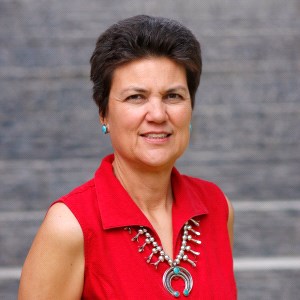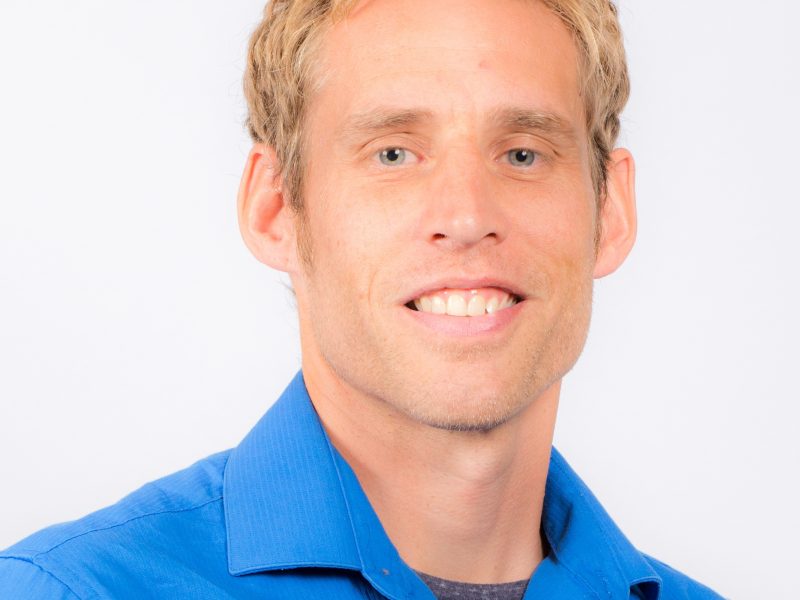Exploring the perspectives of C-NACHE researchers working to advance Native American cancer health equity
As we commemorate National Cancer Research Month this May, we are called to recognize not only the scientific strides made in understanding and combating cancer but also the disparities that persist, particularly among Indigenous communities. In this piece, we invite you to join us in amplifying the voices and experiences of two distinguished principal investigators, whose journeys through cancer research are imbued with a deep sense of cultural sensitivity and commitment to health equity.
Together, we’ll traverse the landscapes of breakthroughs and challenges, guided by the principles of collaboration and community-centered research, which are foundational to addressing the unique needs of Native American populations. Amidst discussions of technological advancements and future directions, we’ll carve out space to acknowledge the importance of education, awareness, and culturally competent care in fostering equitable health outcomes.
So, let us embark on this enlightening voyage, mindful of the need to weave together the threads of science, culture, and compassion in our quest for health equity in the fight against cancer.
C-NACHE principal investigators


Q&A section
Question topics: Research Journey, Breakthroughs and Discoveries, Challenges and Solutions, Collaborative Efforts, Advancements in Technology, Community-Centered Research, Education and Awareness, Future Directions, and Personal Reflections.
Q: What inspired you to pursue a career in cancer research?
A: “Cancer seems to affect everyone either directly or through their family and friends. Cancer in the Navajo Nation, my community, is especially heartbreaking as many folks have difficult outcomes. Working in cancer research makes me feel that I am improving things for the Navajo people and others with respect to cancer.” – Dr. Ingram
A: “I was actually not a cancer researcher, but focused on health promotion interventions in underserved communities, with a special interest in physical activity. When I came to NAU in 2011, there was a call from the Partnership for Native American Cancer Prevention or ‘NACP’. I applied my interest in physical activity with cancer and ended up developing a grant focused on a physical activity intervention for native American cancer survivors in partnership with Dr. Jennifer Bea from the University of Arizona Cancer Center and Dr. Anna Schwartz, longtime cancer exercise researcher. That led to a lot of contacts across the NACP partnerships and our regional partners such as the Navajo Epidemiology Center, which leads the Navajo Cancer Workgroup. Several NAU collaborators including Dr. Priscilla Sanderson and Carol Goldtooth-Begay were already on the workgroup. Their work on epidemiological cancer registry data was impressive and over time, we started exploring ways to enhance the impact of the data and develop a full Navajo Cancer Control and Prevention plan, which is the basis of our current project.” – Dr. de Heer
Q: What has been the most significant breakthrough or discovery in your research and what are the impacts?
A: “An important discovery in our water research on Navajo is the extent of arsenic contamination that is present. When I began the Navajo water research, we were focused on uranium due to the legacy mining. However, arsenic contamination is an issue as well.” – Dr. Ingram
A: “I actually believe that perhaps the most important breakthrough is the capacity of our network and support of our trainees. I can only contribute to so many projects myself, but a critical mass of Masters and PhDs from the communities we work with can move mountains. That being said, I am very proud of the physical activity intervention we developed and implemented, with notable leadership from Brenda Charley and several students like Jennifer Hudson and Janet Yellowhair. Our current work is focused on development of a Navajo Cancer Control and Prevention plan, which I think is a very important step and spearheaded by well-known indigenous cancer scientist Dr. Linda Burhansstipanov.” – Dr. de Heer
Q: What are some of the major challenges you face in your research, and how do you overcome them or adapt to them?
A: “One challenge is wanting to get results quickly but knowing that it takes time to collect quality information.” – Dr. Ingram
A: “Perhaps the biggest challenge is that collaboration takes time and resources. Each of our partner organizations has their own requirements, and contracting can be time consuming. There is, however, a lot of willingness to work together and if we can streamline our processes, we can do even more!” – Dr. de Heer
Q: How important is collaboration in cancer research, and who do you work with (e.g., other researchers, institutions)?
A: “Collaboration is essential in cancer research as it is important to know what others are doing in the field and how different groups can combine their knowledge to answer important questions.” – Dr. Ingram
A: “Collaboration is everything. This work is not about one person or group getting recognized, but rather about the ability of our network and partnerships to make meaningful progress. The Navajo Epidemiology Center under leadership of Del Yazzie and Sy Francisco have been longtime partners. Community Outreach and Patient Empowerment in Gallup, NM is also a great partner organization.” – Dr. de Heer
Q: How have recent advancements in technology (e.g., AI, genomics) influenced your research?
A: “Honestly, while I believe these technologies will be very impactful long-term, our needs are much more capacity-driven at the time. We need access to basic services for everyone, address environmental contamination and really need workforce development such as radiology technicians, oncology nurses and public health professionals. That being said, I was actually a postdoctoral fellow at the National Human Genome Research Institute from 2009-2011 and do believe that genomic-based treatments and pharmacogenomics will be impactful. Also, family history can be a very strong predictor of disease risk as it includes both genetic, environmental and behavioral factors, especially when a family member has early-onset disease.” – Dr. de Heer
Q: How do you involve community in your research, and why is community involvement important?
A: “We cannot and should not do research without working with the community. It is critical to understand their concerns and to gain their viewpoint. The research is most affective when the projects are developed with the community’s input.” – Dr. Ingram
A: “I like to say that the ‘people closest to the problem have the best solutions.’ If community members experience challenges accessing cancer-related services, they can tell us what is missing and suggest solutions. Similarly, the current providers are key stakeholders who can tell us what their most urgent needs are. People like Curtis Briscoe, the director of the Navajo Nation Breast and Cervical Cancer Screening Program and TJ Riggs, the director of the cancer services at Tuba City Regional Healthcare Cooperative are very important resources.” – Dr. de Heer
Q: How do you educate others about your research and its implications?
A: “My lab reports findings back to community members and leaders. We also attend community events to provide information. Finally, we publish out findings in peer-reviewed scientific journals.” – Dr. Ingram
A: “In collaboration with experts in community engagement (like the SHERC Community Engagement Core, the C-NACHE Community Advisory Board etc.), we always try to develop community-oriented materials, make all our scientific materials publicly accessible and work with trainees and leaders from the communities we work with. They can advise best on what will work in dissemination of our findings.” – Dr. de Heer
Q: What excites you most about the future of your cancer research?
A: “I am very hopeful that we will be able to determine the connection (or not) between environmental exposures due to legacy mining and cancer incidence.” – Dr. Ingram
A: “I am excited about the future potential for system-level agreements and policy changes. I want our research to influence policy and have real-world impact on the Navajo Nation and support the tribal nations in setting cancer-related priorities.” – Dr. de Heer
Q: Can you share a memorable moment from your research journey that has stayed with you?
A: “The most memorable moments are seeing my students move forward in their journeys by getting their degrees, getting jobs in chemistry and environmental science, and having fulfilling lives.” – Dr. Ingram
A: “I remember speaking with a cancer survivor who participated in our exercise intervention. She had to drive an hour and a half just to participate, but she did once a week, and was just so resilient. She shared the challenges she faced because some people in her environment were unfamiliar with cancer and avoided her in fear of the disease, or perhaps just being unsure what to do. I was so impressed by her resilience and determination, but also struck just by the extent of the challenges she had to face.” – Dr. de Heer